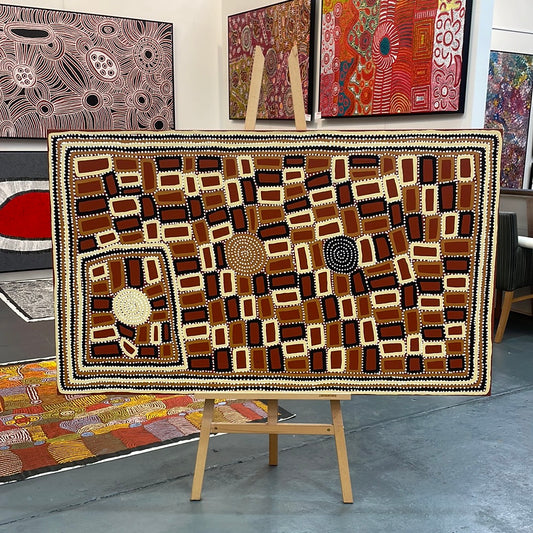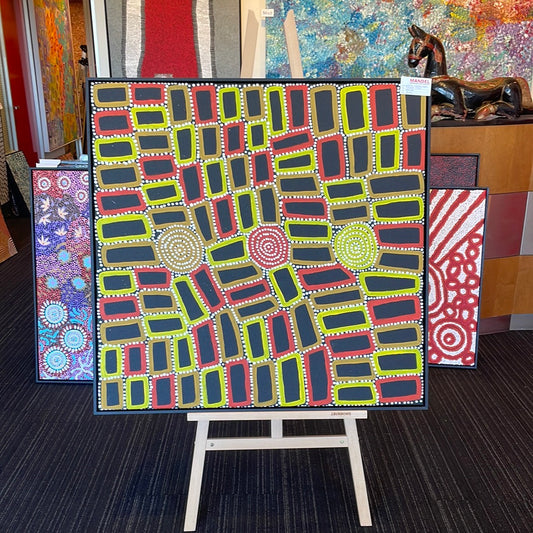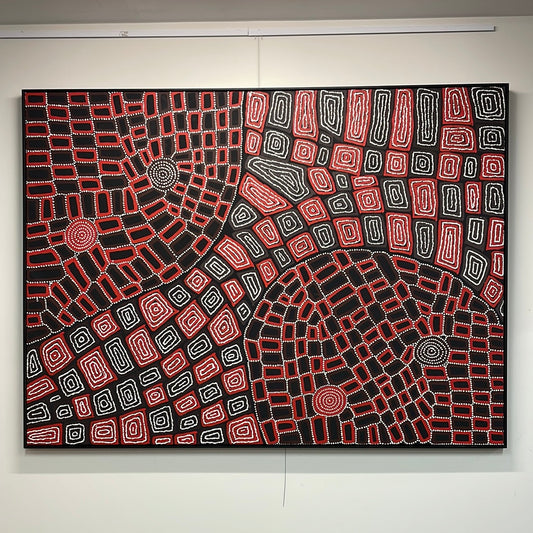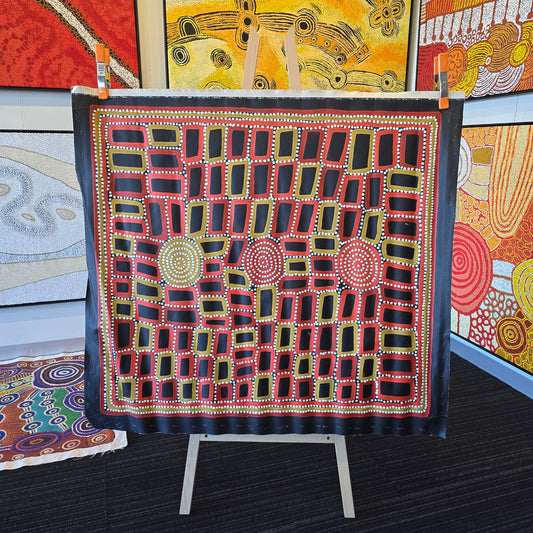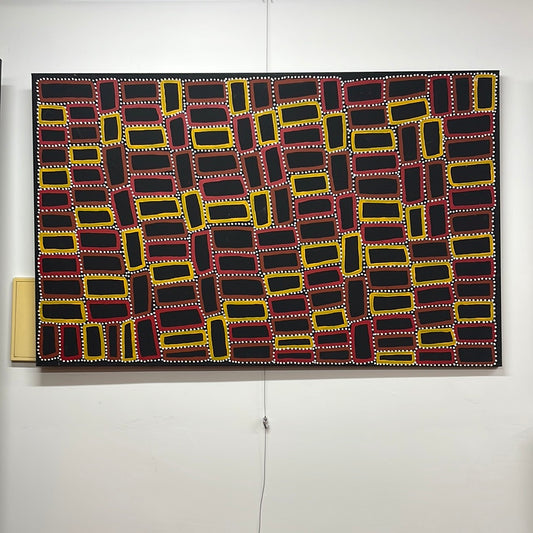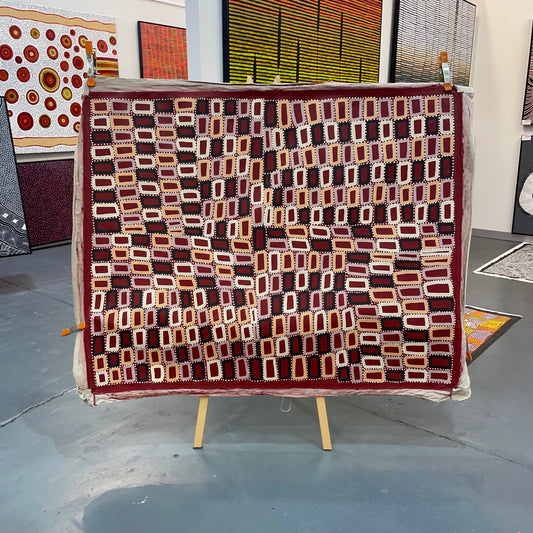Collection: Walala Tjapaltjarri
-
Walala Tjapaltjarri 970 mm x 980 mm
CODE : 9073Vendor:Walala TjapaltjarriRegular price $1,900.00 AUDRegular priceUnit price / per -
Walala Tjapaltjarri 900mm x 1500mm
CODE : 4817Vendor:Walala TjapaltjarriRegular price $3,900.00 AUDRegular priceUnit price / per -
Walala Tjapaltjarri 970 mm x 980 mm
CODE : 3317Vendor:Walala TjapaltjarriRegular price $1,990.00 AUDRegular priceUnit price / per$2,100.00 AUDSale price $1,990.00 AUDSale -
Walala Tjapaltjarri 1210 mm x 1900 mm
CODE : 6491Vendor:Walala TjapaltjarriRegular price $4,900.00 AUDRegular priceUnit price / per$5,900.00 AUDSale price $4,900.00 AUDSale -
Walala & Thomas Tjapaltjarri 1520 mm x 2040 mm
CODE : 3760Vendor:Walala TjapaltjarriRegular price $8,500.00 AUDRegular priceUnit price / per -
Walala Tjapaltjarri 950mm x 1080mm
CODE : 3055Vendor:Walala TjapaltjarriRegular price $3,190.00 AUDRegular priceUnit price / per -
Walala Tjapaltjarri 900 mm x 1460 mm
CODE : 630Vendor:Walala TjapaltjarriRegular price $2,800.00 AUDRegular priceUnit price / per$3,600.00 AUDSale price $2,800.00 AUDSale -
Walala Tjapaltjarri 850 mm x 2100 mm
CODE : 6569Vendor:Walala TjapaltjarriRegular price $5,600.00 AUDRegular priceUnit price / per$0.00 AUDSale price $5,600.00 AUD -
Walala Tjapaltjarri 950 mm x 1670 mm
CODE : 7386Vendor:Walala TjapaltjarriRegular price $4,200.00 AUDRegular priceUnit price / per -
Walala Tjapaltjarri 1200 mm x 1500 mm
CODE : 8200Vendor:Walala TjapaltjarriRegular price $9,900.00 AUDRegular priceUnit price / per
Unlocking the Legacy of Walala Tjapaltjarri
Walala Tjapaltjarri, a name resonating with artistic brilliance, is a testament to Indigenous Australian art's profound cultural depth. Delving into the enigmatic world of Walala Tjapaltjarri unveils a narrative woven with tradition, innovation, and an enduring connection to the land.
Early Beginnings and Evolution
Born in the late 1960s east of Kiwirrkurra, Western Australia, Walala Tjapaltjarri belongs to the Pintupi language group. Introduced to painting by his brother Warlimpirrnga, also a renowned artist, Walala quickly embraced the art form.
Alongside his family, he roamed the vast expanses of the desert, subsisting on a diet primarily composed of goanna, rabbit, and bush foods. In 1984, his family group emerged from the desert, a pivotal moment that marked the end of their isolated existence.
Initially inspired by classical Tingari designs used in traditional body painting and artifact decoration, Walala swiftly developed his own innovative style. Within months, he transitioned into abstracting these classical designs, infusing them with his personal touch.
The Last Nomads
Known as "the Last Nomads" and "the Group of Nine," Tjapaltjarri's family was among the final desert dwellers to transition to settled life. Their arrival in Kiwirrkura, Western Australia, after two decades of isolation, captivated the attention of the wider community.
The group's reconnection with their relatives and the establishment of their new lives in settled communities marked a significant chapter in their history.
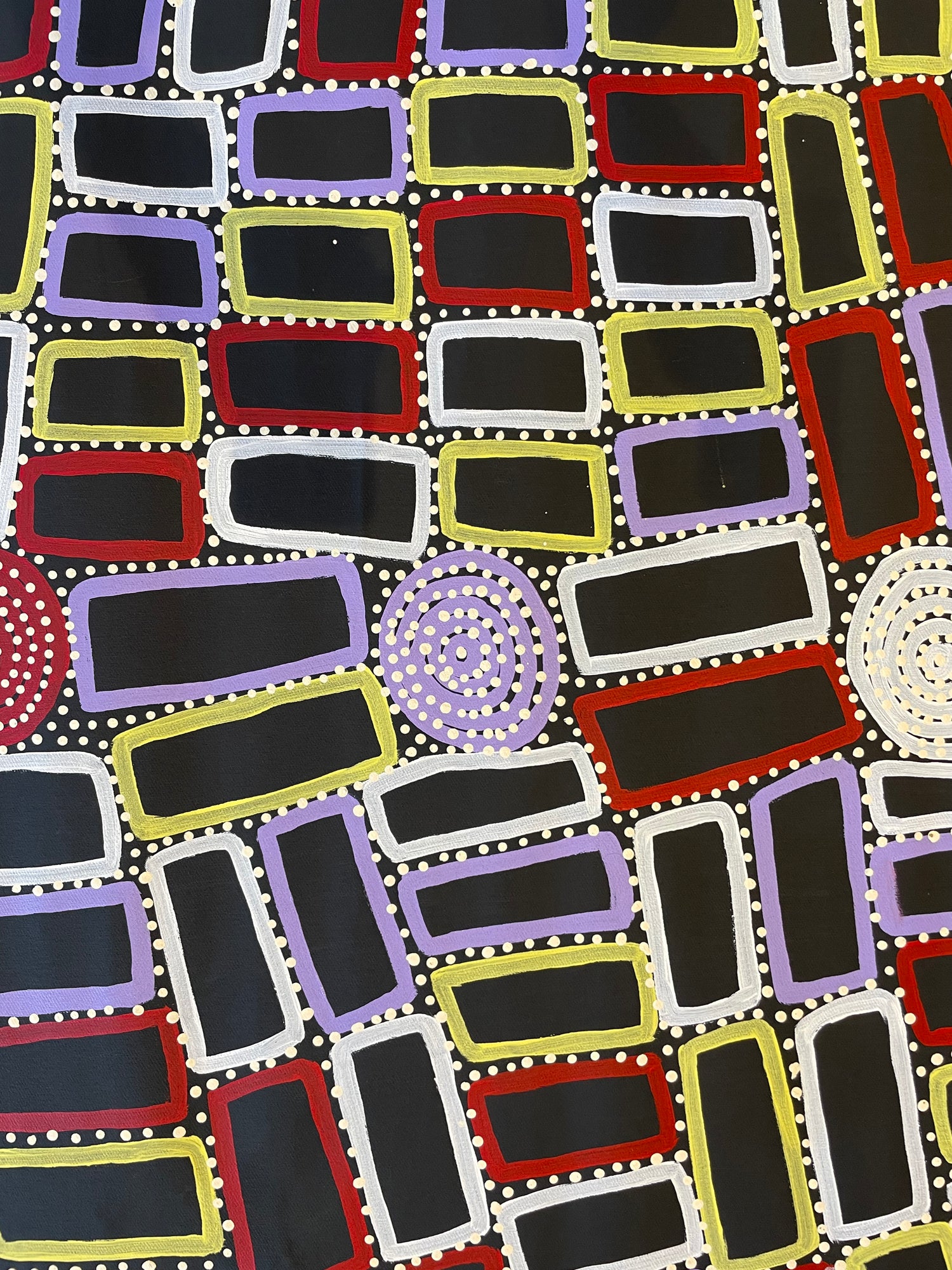
Tingari Cycle: A Spiritual Journey
Central to Walala's artistic repertoire is the portrayal of the Tingari Cycle, a series of sacred mythological song cycles. These Dreamings hold profound cultural significance, representing the epic journey of Ancestors during the Creation Era.
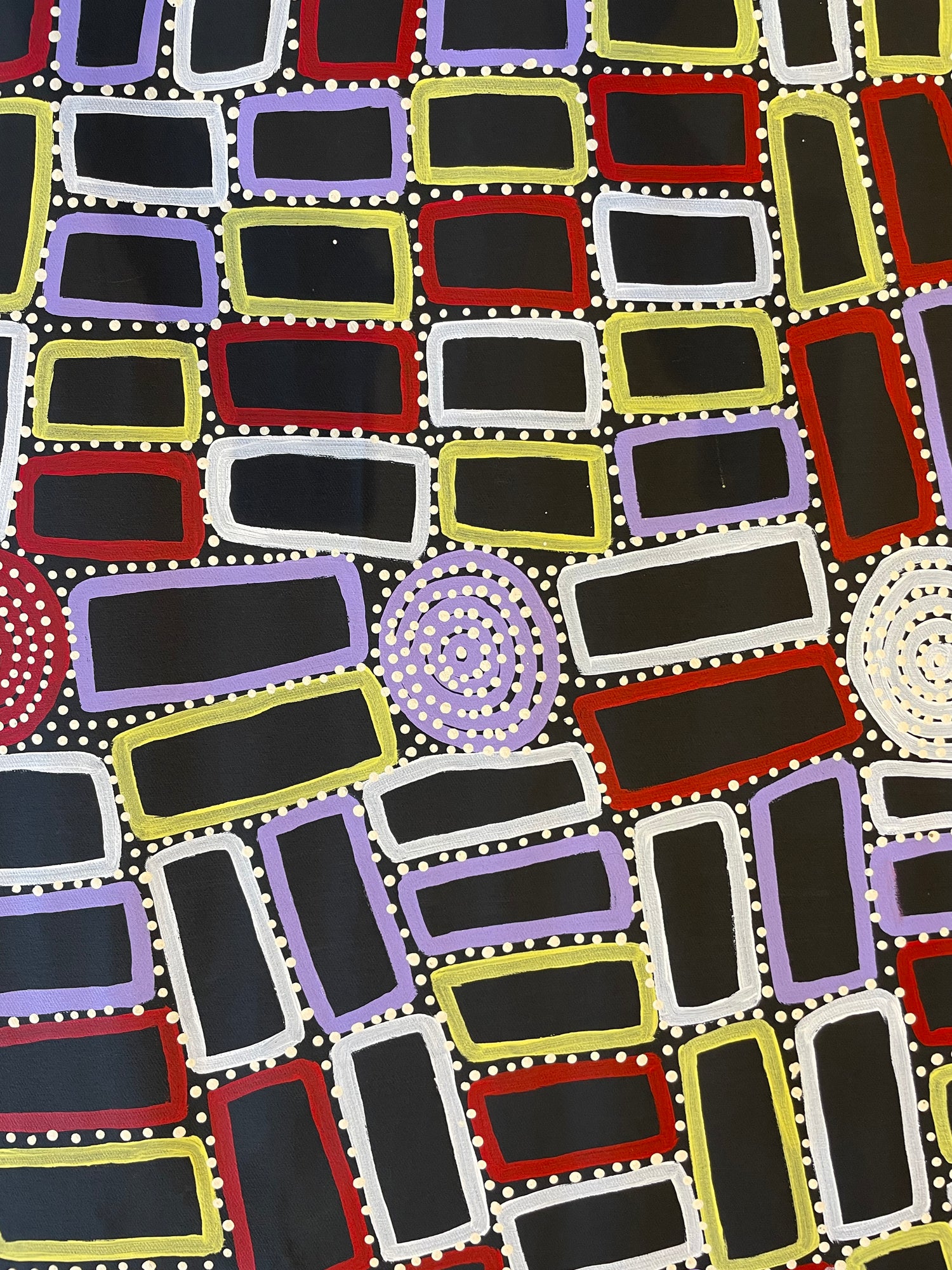
Walala's minimalist style effectively captures the essence of the Tingari Cycle, breathing life into the ancestral narratives and preserving cultural heritage for generations to come.
Walala Tjapaltjarri's dominant artistry shows a profound reverence for ancestral narratives. Through his vibrant canvases, he translates age-old Dreamtime stories, ancestral travels, and sacred sites into visual masterpieces that resonate with viewers on a spiritual level.
Since he began painting in While deeply rooted in tradition, Walala Tjapaltjarri's artistic expression also embraces innovation. His bold use of color palettes, geometric patterns, and abstract forms adds a contemporary flair to his works, captivating audiences with their dynamic energy and timeless allure.
The Legacy of the Tjapaltjarri Brothers
Beyond individual acclaim, the Tjapaltjarri brothers collectively contribute to the enduring legacy of Indigenous Australian art. Their collaborative efforts serve as a testament to the strength of familial bonds and the shared commitment to preserving cultural heritage for generations to come.
In a landscape dominated by commercial interests, the presence of Walala Tjapaltjarri's artworks shines as beacons of authenticity and cultural integrity. Despite the presence of competitors in the market, discerning collectors recognize the unparalleled value embedded within each piece, transcending mere monetary worth.
Beyond the realm of artistry, the legacy of Walala Tjapaltjarri extends to the empowerment of Indigenous communities. Through their artistic endeavors, the Tjapaltjarri brothers amplify the voices of their ancestors, advocating for cultural preservation and fostering greater appreciation for Indigenous heritage on a global scale.
Recognition and Exhibitions
Tjapaltjarri's artistic talent has garnered widespread recognition, with his works featured in prestigious exhibitions both nationally and internationally. From the 14th National Aboriginal and Torres Strait Islander Art Award in Darwin to solo exhibitions in Sydney, Melbourne, and Brisbane, his art continues to captivate audiences around the globe.
Embracing the Spirit of Walala Tjapaltjarri
In the tapestry of Indigenous Australian art, the name Walala Tjapaltjarri shines brightly as a beacon of cultural resilience and artistic innovation. Through his timeless works, he invites us to embark on a journey of discovery, where tradition and innovation converge to form a harmonious symphony of visual storytelling.
As we navigate the intricate landscapes of his canvases, we are reminded of the enduring legacy of the Tjapaltjarri brothers and the timeless power of art to transcend boundaries and unite humanity in shared cultural appreciation.
Navigate through the spiritual art of the Tjapaltjarri brothers with Mandel Aboriginal Art Gallery. Reach out to us or call us at (03) 9497 5111 to learn more about Tjapaltjarri art and its sale.


